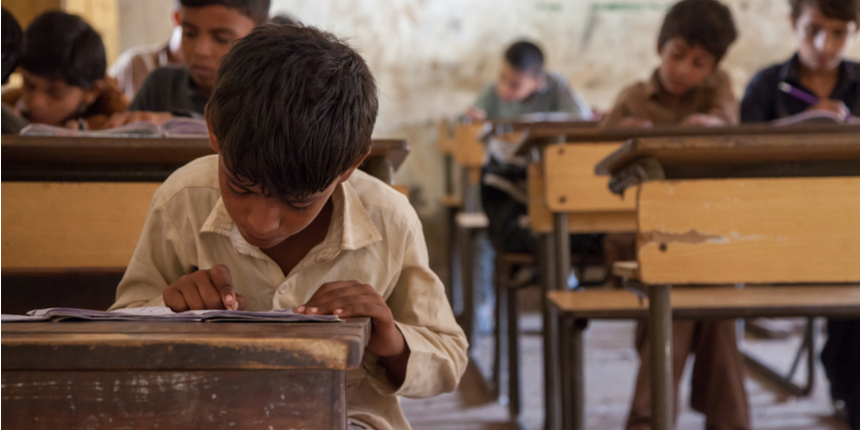Odisha under-utilised SC, ST, minorities funds during COVID-19: Study
Atul Krishna | January 19, 2022 | 02:07 PM IST | 3 mins read
Odisha: Budgets for schemes targeting children rose since 2017-18 till the pandemic period but actual spending was far lower.

NEW DELHI: An analysis of Odisha’s child budget statements from 2017-18 to 2021-22 has shown wide gaps between revised budget estimates and actual expenditure for the departments of Scheduled Tribes, Scheduled Castes and minorities.
The analysis by the National Institute of Public Finance and Policy (NIPFP) says that while Odisha has shown “commendable consistency” in child budgeting during the COVID-19 pandemic and an “upward trend” in allocations for children till 2020-21, funds have been underutilised by certain critical departments
The analysis noted that higher budgetary allocation for children did not translate into increased actual spending.
Also Read| Union Budget 2022: Fund offline classes, not edtech, for school children, say activists
“We observe that the departments of Women and Child Development, Scheduled Tribes and Scheduled Caste, Minorities and Backward Classes Welfare Department and Health and Family Welfare share out the 2nd, 3rd and 4th highest expenditures on children from their budget (2019-20), respectively, but have the least credibility over their budget too,” the working paper published on January 18 said.
Child budgeting is a tool to track the allocation and expenditure of services designated for children. As per the analysis, the bulk of the allocation for children in Odisha is through the departments of education, women and child development, Scheduled Tribes and Scheduled Castes, minorities and backward classes, and health and family welfare.
NIPFP is an autonomous research institute under the ministry of finance. The analysis was done by researchers Amandeep Kaur and Lekha Chakraborty who measured Odisha’s budget allocations for children with the Public Expenditure Financial Accountability (PEFA) framework.
Odisha: ‘D’ on spending
“The percentage allocation from the Gross State Domestic Product (GSDP) stands between 3-5% for the years under consideration. This indeed is commendable as the pandemic has affected the human development imperatives substantially. The point to note here is that even though after the pandemic hit, the proportionate rise in the child budget allocations have not been huge, but given the situation, the consistency of maintaining the scheme allocations is commendable,” the working paper said.
Also Read| Budget 2022: Activists demand more scholarship funds for girl students
The analysis said that Odisha “managed to keep the children’s priorities in perspective” during the pandemic although “proportionate increase in allocations reduced considerably” since 2020-21.
However, as the analysis found, there was “huge deviation” between the proposed budget allocations and actual funds released for several departments leading to “low budget credibility”.
“The PEFA analysis also reveals that Women and Child Development and Scheduled Tribes and Scheduled Caste Development departments have a score of ‘D’ suggesting huge deviation from the budget estimates. Even Health and Family Welfare department score at ‘D’ indicates low budget credibility,” the NIPFP analysis said.
A score of ‘D’ indicates a budget deviation of more than 15 percent from what was allocated.
Also Read| Centre spent 79% funds for Beti Bachao Beti Padhao on advertising: Parliamentary Panel
The analysis found that apart from the department of education, the other top four departments that have the most allocation for children have not spent the entire allocated budget.
The PEFA is an international programme developed by the World Bank, International Monetary Fund along with several European governments to bring uniformity in assessing public financial management. Within the PEFA framework, government entities are graded from A to D on their performance in public finance management.
Spending lower than budget
The analysis found that despite Odisha releasing funds as per the budget estimates, there is an under-utilisation of funds when one considers the revised estimates. That is, despite increased allocations in the revised estimate, Odisha spent only the original amount and not the revised amount.
“The fiscal marksmanship analysis shows that in the case of Budget Estimates to Actuals ratio, all the departments listed for child-centric allocations have a perfect marksmanship ratio; while in the case of Revised Estimates to Actuals ratio, we observe that there has been under-utilisation of resources,” the analysis said.
Marksmanship ratio shows the deviation between what is budgeted and what is actually spent across sectors.
“We observe that the child related expenditures do have a perfect marksmanship but the total budgets of these departments except Departments of Social Security and Empowerment of Persons with Disability indicate over-estimation of the variables which means that the budgeted allocations are more than what is actually spent,” the analysis said.
According to the analysis, education saw the highest allocation for children (62% of total allocations)
for the Budget 2021-22 . This is followed by schemes for development (43%), health (23%) and protection (20%).
Follow us for the latest education news on colleges and universities, admission, courses, exams, research, education policies, study abroad and more..
To get in touch, write to us at news@careers360.com.
Next Story
]Schools, Colleges Reopening News Live: Updates on board exams 2022, postponement, Covid-19 vaccination
Covid-19, Omicron cases in India: Latest updates on CBSE, CISCE, state boards including Uttar Pradesh board, Bihar Class 10, 12 board exam 2022. Covid cases in IITs and other universities.
Team Careers360